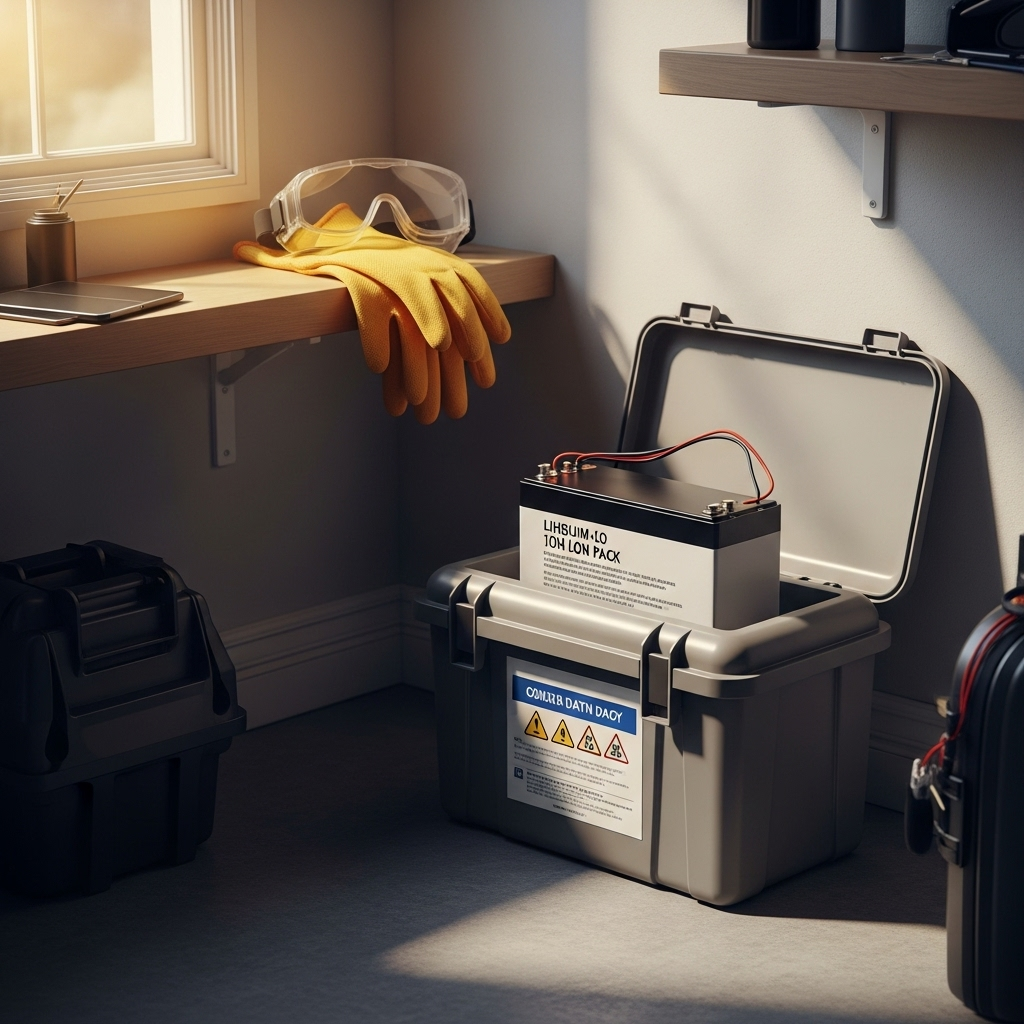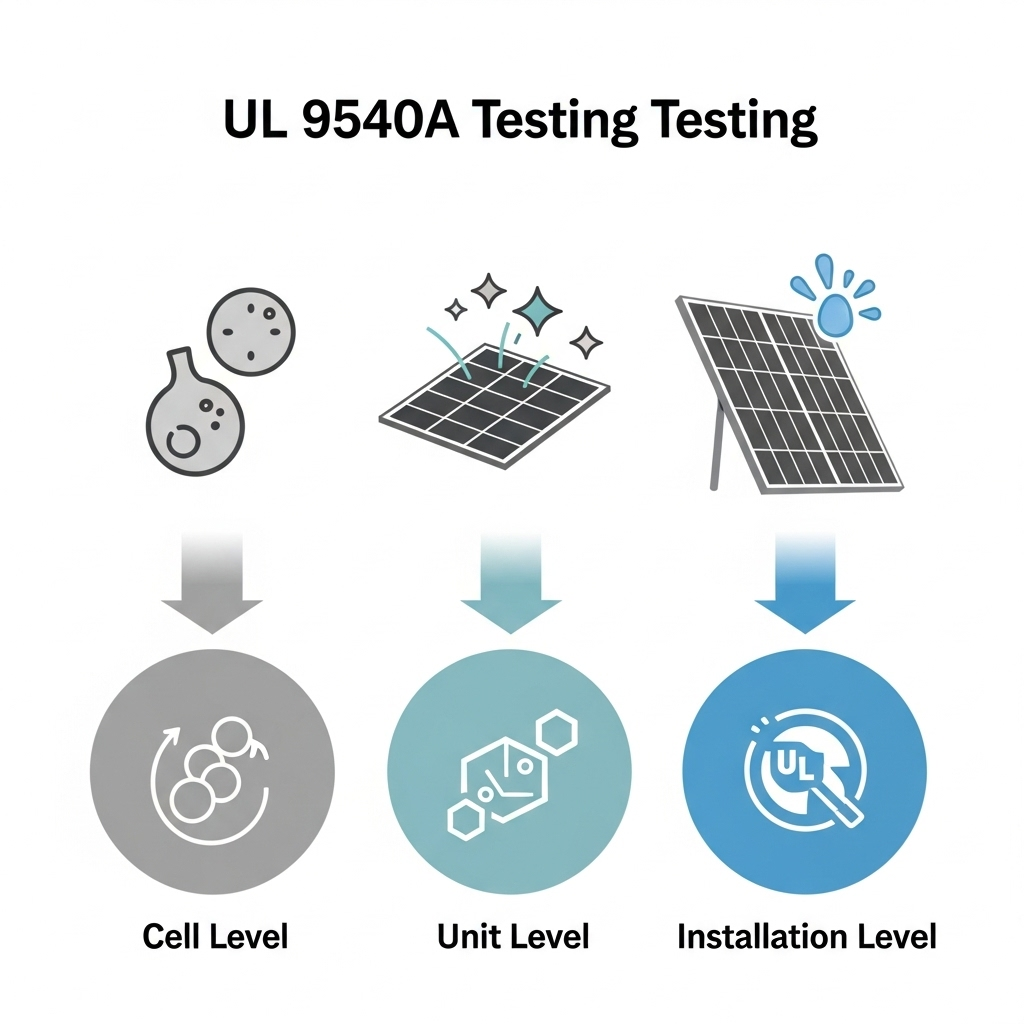Your home energy storage system is a cornerstone of energy independence, quietly working to power your life. But like all technologies, its battery has a finite lifespan. When a lithium-ion (Li-ion) battery pack reaches the end of its service life, it doesn't just stop working; it enters a new phase where improper handling can create significant safety risks. Storing a spent battery incorrectly is not a passive act—it's an active hazard waiting to happen. Understanding the rules for handling these packs is crucial for protecting your home, your family, and the environment.
Understanding a 'Spent' Battery and Its Hidden Dangers
A common misconception is that a 'spent' or 'end-of-life' battery is empty and inert. This is dangerously false. These batteries still contain significant residual energy and reactive chemical components, making them a potential hazard if mismanaged.
What 'Spent' Actually Signifies
A battery is typically considered at its end-of-life when its capacity has degraded to a point where it no longer meets the demands of your home—often around 70-80% of its original capacity. Key indicators include:
- Diminished Capacity: The battery doesn't hold a charge for as long as it used to.
- Slow Charging/Discharging: It takes much longer to charge or provides power at a reduced rate.
- Inconsistent Performance: The power output becomes erratic or unreliable.
- Physical Changes: Any sign of swelling, cracking, or leaking is a critical warning that the battery is compromised and must be decommissioned immediately.
The Real Risks of Improper Storage
The primary danger associated with spent Li-ion batteries is thermal runaway. As noted in research by the International Energy Agency (IEA), the high energy density and flammable organic electrolytes in these cells create a fire risk. A study, The Role of Critical Minerals in Clean Energy Transitions, highlights that these characteristics demand stringent safety measures for handling and transport. A short circuit, physical damage, or exposure to high temperatures can trigger a chain reaction, leading to intense fires that are difficult to extinguish and can release toxic fumes.
Golden Rules for Safe Handling and Temporary Storage
Once you've determined a battery needs to be replaced, your immediate actions are critical. Follow these rules to manage the period between disconnection and proper disposal.
Immediate Actions After Disconnection
First, always consult the manufacturer's instructions for shutting down and disconnecting the battery system. If you are not comfortable with this process, hire a qualified electrician. Once disconnected:
- Wear Protective Gear: Always use safety glasses and insulated gloves.
- Inspect the Battery: Carefully check for any signs of damage, such as swelling, leaks, or cracks. If you see any, exercise extreme caution and contact a specialist recycler immediately.
- Isolate the Terminals: Cover the battery terminals with electrical tape or plastic caps to prevent accidental short circuits.
Creating a Safe Storage Environment
The goal is to store the battery in a stable, isolated environment until it can be transported for recycling. Find a location that is:
- Cool and Dry: Heat is an enemy of battery stability. A garage or shed that does not experience extreme temperature swings is a good option. Avoid damp basements.
- Well-Ventilated: Proper airflow helps dissipate any potential off-gassing.
- Away from Flammables: Do not store the battery near gasoline, paint thinners, paper, or other combustible materials.
- In a Proper Container: Place the battery in a non-conductive container, such as a heavy-duty plastic box or its original packaging if available. Clearly label the container as 'Spent Lithium-Ion Battery - For Recycling.'
Critical 'Don'ts' for Battery Storage
What you don't do is just as important as what you do:
- DO NOT store the battery inside your home's living areas.
- DO NOT stack other items on top of the battery pack.
- DO NOT attempt to open, repair, or disassemble the battery pack. This is extremely dangerous and should only be done by trained professionals.
- DO NOT store a damaged or leaking battery. Contact a hazardous waste disposal expert immediately.
Navigating Transport and Disposal
You cannot simply throw a spent Li-ion battery in the trash or take it to the local dump. These batteries are regulated materials that require a specific disposal pathway.
Transport and Recycling Logistics
Transporting spent Li-ion batteries presents a challenge. They are often classified as hazardous materials (Hazmat) and require special handling, packaging, and labeling to be moved safely. The IEA points out that clear guidance on collection, transport, and storage of end-of-life batteries is crucial for a safe and efficient recycling process. Your role is to get the battery to an authorized facility that can manage the rest of the journey.
Finding a Certified Recycler
Your first step should be to contact the battery manufacturer or the installer of your system. Many have take-back or trade-in programs as part of their Extended Producer Responsibility (EPR) obligations. If not, search for certified e-waste or battery recycling centers in your area. Organizations like Call2Recycle in the United States and similar bodies in other regions provide directories of drop-off locations. Always verify that the facility is certified to handle industrial or large-format Li-ion batteries, not just small consumer electronics batteries.
| Action | Why It's Important | Best Practice |
|---|---|---|
| Isolate and Inspect | Prevents short circuits and identifies immediate hazards like swelling. | Wear PPE. Cover terminals with electrical tape. |
| Store Safely | Reduces risk of thermal runaway and fire. | Cool, dry, ventilated area, away from flammables. |
| Use Certified Recyclers | Ensures safe handling and maximizes material recovery. | Check with the manufacturer or local e-waste authorities. |
| Never Trash It | Avoids landfill fires and environmental contamination. | Follow designated recycling pathways. |
Your Role in the Circular Economy
Properly managing your spent battery is more than just a safety measure; it's a vital contribution to a sustainable energy future. These batteries contain valuable materials like lithium, cobalt, nickel, and copper. As highlighted by the IEA in its report The State of Energy Innovation, supportive regulations and clear producer responsibilities are needed to scale up recycling effectively.
When you send your battery to a certified recycler, you enable these materials to be recovered and used in new batteries. This 'closed-loop' process reduces the environmental and social impacts of mining new materials and strengthens the supply chain for clean energy technologies. According to the IEA's analysis in The Power of Transformation, energy storage is uniquely suited to support energy systems, and recycling ensures the materials that enable this technology are used again and again.
Final Steps for Responsible Ownership
Handling a spent home Li-ion battery pack demands respect and diligence. By following these rules, you are not just complying with regulations; you are taking an active role in preventing accidents and promoting a circular economy. Remember the key principles: disconnect safely, store in an isolated and stable environment, and hand it over to a certified professional for recycling. Your responsible actions ensure that your journey with solar energy ends as safely and sustainably as it began.
Disclaimer: This article provides general information and is not a substitute for professional advice. Always follow the manufacturer's guidelines and consult with qualified professionals for handling, disconnecting, and disposing of battery systems. Regulations may vary by location.
Frequently Asked Questions
Can I just throw my old home battery in the regular trash?
Absolutely not. It is illegal in many places and extremely dangerous. Spent Li-ion batteries can cause fires in garbage trucks and waste processing facilities. They also contain materials that can harm the environment if they end up in a landfill. Always use a certified battery recycler.
How long can I store a spent battery at home before recycling it?
You should arrange for recycling as soon as possible. While safe temporary storage is possible, the goal is to minimize the time the spent battery remains on your property. Aim to have it transported to a recycling facility within a few weeks of disconnection.
What should I do if I notice my battery is swelling, leaking, or damaged?
If you see any physical damage, treat it as an extreme emergency. Do not touch or move the battery. Keep a safe distance, ensure the area is well-ventilated, and immediately contact your local fire department's non-emergency line for guidance or a specialized hazardous waste disposal company. Do not attempt to store it.
Does my battery's performance affect its end-of-life handling?
Yes, understanding its performance is key to knowing when it has reached its end of life. Key metrics like Depth of Discharge (DoD), State of Health (SoH), and overall efficiency decline over time. Tracking these helps you plan for replacement before the battery fails completely. For a detailed explanation of these metrics, you can review this ultimate reference on solar storage performance to better understand your system's health.





Leave a comment
All comments are moderated before being published.
This site is protected by hCaptcha and the hCaptcha Privacy Policy and Terms of Service apply.